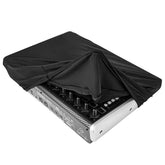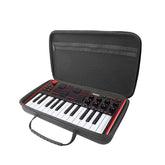Harmonizing Artistry: Key Aspects in Piano Mastery and Musical Expression
by
linzz
02 Feb 2024
The only language that is universal in the world is music. Music, as a form of aesthetic expression, is the art of directly conveying the emotions of the human soul through sound.
01 The Issue of Making the Piano "Sing"
Students need to understand that rigorous training to strengthen basic skills is essential to achieve perfected techniques. The goal is to express artistic thinking in performance using the correct sound. It's crucial to realize that mechanical and contentless playing is not music at all. Sound, when isolated, doesn't have a concept of right or wrong; it must be connected to the content and style of the piece.

02 The Issue of Proper Key Touch Awareness and Techniques
Firstly, the sitting posture while playing the piano is important. The piano bench should be at a moderate height, the whole body should be naturally relaxed, the waist should be straight, the upper body slightly leaning forward, and the shoulders and arms relaxed, avoiding stiffness or laziness. Correcting a bad habit in a student is much harder than cultivating a good one. Even the slightest tension, if not addressed, can develop into harmful habits or pathological tension. The wrist is not only a crucial part for transmitting the strength from the arm to the fingers but also an important factor in adjusting the playing position of the hand. The wrist plays a pivotal role throughout the entire playing process; hence, it should be highly adaptable, avoiding stiffness, tension, and erratic movements, especially when playing melodic tunes.

03 The Issue of Correct Application of Scale Practice
Firstly, it's important to avoid excessive practice; adopting a gradual, permeating approach to scale practice is very effective. Secondly, practice starting from a slow pace to allow students to truly feel the significance of each scale and arpeggio they play, rather than merely completing the task as a routine. Thirdly, strive to introduce some "variations" in scale practice, such as dynamic contrasts or arrangements with certain expressive qualities.
04 The Issue of Using the Piano Sustain Pedal
The sustain pedal is a significant achievement in the instrument reform of the modern piano. Renowned pianist Rubinstein once said, "The pedal is the soul of the piano; being able to use it well achieves three-quarters of playing a piece." This emphasizes the importance and irreplaceability of the pedal in piano performance. Pedal usage can generally be divided into two types: full pedal and half pedal. Full pedal requires pressing it all the way down, while half pedal involves pressing it halfway, preserving a portion of the sound, with different parts having varying harmonic progressions.







